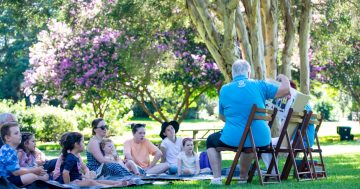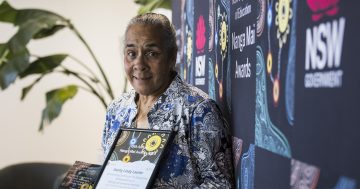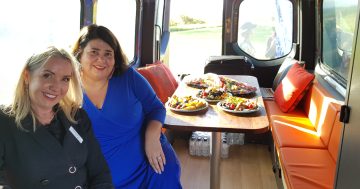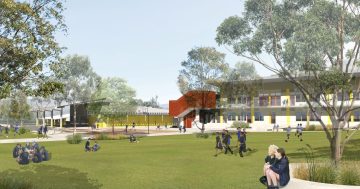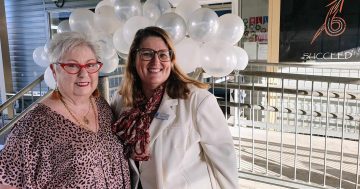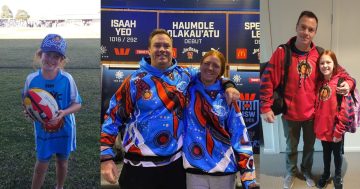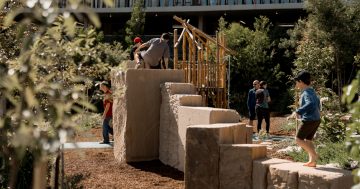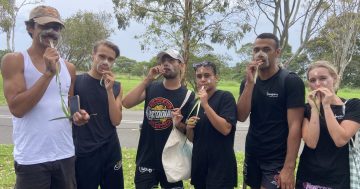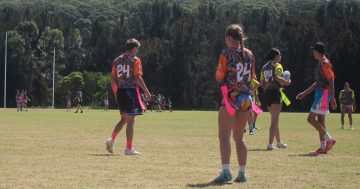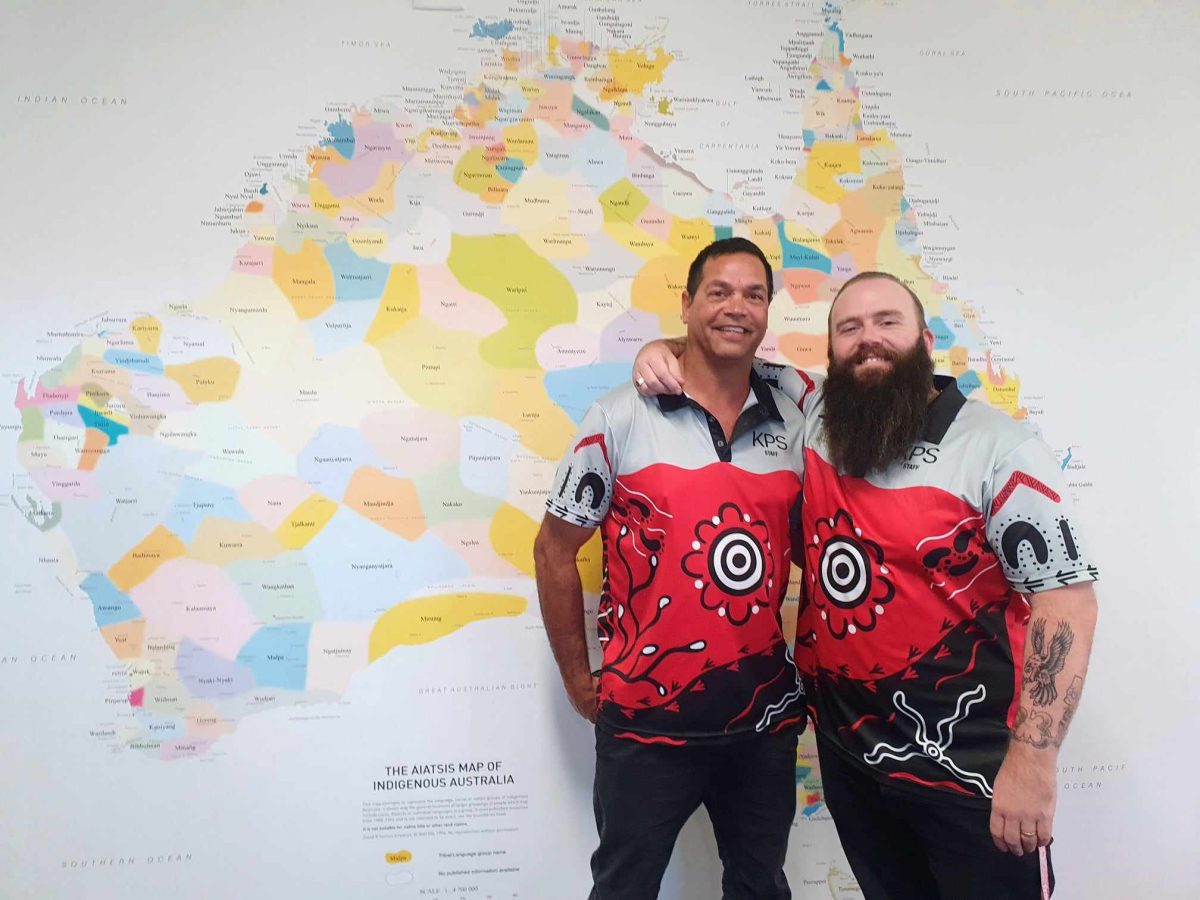
Koonawarra Public School Aboriginal Education Officer Lee Moran with deputy principal Brent Pritchard during Reconciliation Week. Photo: Zoe Cartwright.
Reconciliation Week comes around once a year, but at Koonawarra Public School reconciliation is a year-round commitment.
School assemblies have been replaced by ceremony, yarning circles and Dharawal language are embedded in every school day, and local Elders regularly share their knowledge with staff and students.
With more than 35 per cent of students at the school identifying as Aboriginal and Torres Strait Islander, deputy principal Brent Pritchard said staff were passionate about their responsibility to make the environment culturally safe.
“It’s a tricky thing to do in any school because schools are historically and systemically racist institutions,” he said.
“A lot of families have had negative experiences with schools in the past so creating culturally safe spaces with Aboriginal people, for Aboriginal people and giving the time and space for that to happen is crucial.
“No matter how passionate or empathetic we are, as a white person I’ll never be able to have that cultural safety or link that our Aboriginal staff members would have.
“We’re lucky to have Aboriginal staff members who can give that.”
Brent said the benefits of incorporating culture into the school’s day-to-day activities were tangible.
He said students having a hard time would often ask to go to the yarning circle, or speak to the school’s Aboriginal Education Officer (AEO), Lee Moran.
“Going out onto the playground after ceremonies or dance, you can feel how calm and connected it is,” Brent said.
“It’s something they’ve come to rely on in difficult times as a way to manage their emotions and that shows they associate good feelings and calmness with the programs and culture we embed.
“It’s a big win.”
Lee, a former student at Koonawarra Public School, said it was a completely different environment to the one he experienced as a child in the 1980s.
“I can’t recall one day back then when we did any cultural stuff,” he said.
“Fast forward to now, we do this every day of the week. Our principal and deputy, Amanda and Brent, have embraced that culture, it’s been a big change.”
Dharawal language is used by staff wherever possible, including the classes which are all named after Indigenous animals in Dharawal.
Lee also runs a program, Deadly Dharawals, working with students in small groups aimed at connecting them to culture.
The program is open to Aboriginal and non-Aboriginal students.
“It’s an inclusive program for the boys and girls from preschool to year six to learn Aboriginal culture, artwork and language here on Dharawal Country,” he said.
“We want everyone to learn it here at the school and close that gap between Aboriginal and non-Aboriginal people. We’d like everyone to learn and get that culture out into the community.
“We started last year and about 80 students came through the program and they wanted to go again this year – unfortunately we want to give everyone a crack at it.”
Lee runs the program out of a room filled with bright rugs, artwork, and a wall-sized map of Aboriginal Australia.
He uses the map to help connect students to Country and show the diversity of Aboriginal Australia.
He hopes in future to expand the Deadly Dharawals program to other schools in the area.
Brent said Aboriginal and non-Aboriginal staff were passionate about including culture wherever possible, and the school’s efforts were matched by the generosity of local Aboriginal Elders and knowledge holders.
“I think a big part of reconciliation is recognising and understanding cultural wellbeing practices have kept Country and populations going for 60, 80,000 years,” he said.
“These practices work so well, keeping that alive is more important to reconciliation than having a barbecue or painting some flags.
“We’ve been really lucky to have Aunty Dr Jodi Edwards to work with us with language sharing, the same with Gumaraa and Uncle Richard, and the aunties at Coomaditchie.
“We are so thankful after the history of taking and taking, every time we have asked anyone in the local community for anything cultural they have given and given more than we could have asked, expected or hoped for.”
Brent said reconciliation in action was not always a smooth process, but a commitment to learning, honesty and accountability meant hard conversations could be had.
“Staff here are passionate, empathetic humans as a base,” he said
“We have had moments where we have been challenged about what we’re doing, and is it the right thing to do and the right way to do it, the right person to do it.
“The fact people come in and have those conversations is a good sign, and we can come to a resolution and a way forward together.
“We want to be the best we can be.”








